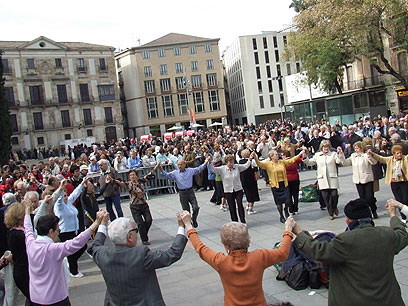1) the Jewish heritage in Spain— an introduction
Signs of the Jewish heritage in Spain can be seen in many reminders of the country's colorful history. The Jews (called Sephardis) may be a minority in the country, but they have played an important part in that history, as we shall see.
Signs of the Jewish heritage in Spain can be seen in many reminders of the country's colorful history. The Jews (called Sephardis) may be a minority in the country, but they have played an important part in that history, as we shall see.
 |
| Jewish heritage in Spain |
2) the Jewish heritage in Spain— the Middle Ages
During the Middle Ages, a large part of southern Spain was ruled by Muslims. Much of the time these people were tolerant of the Jews, allowing them to practice their faith as long as they paid the required tax. They spoke a form of Spanish called Ladino, which included many Hebrew words. Jewish philosophy flourished during this period: One of the most prominent Jewish thinkers was Moses ben Maimon (Rambam), whose chef- d' œuvre "Guide to the Perplexed" attempted to reconcile religion with contemporary philosophy.
The Muslims did often persecute the Jews, however, as did the Christians who regained control in the 1400s. The Inquisition began in Spain, and thousands of Jews were condemned to death. Many fled to the New World, bringing the Jewish heritage in Spain with them.
3) the Jewish heritage in Spain— a modern- day visitor's guide
Present- day reminders of the Jewish heritage in Spain include its many synagogs. Prominent among them are the reconstructed old main synagog in Segovia, which later became a convent; Híjar Synagog in Aragon, one of the best preserved; Córdoba Synagog, which reopened in 1585 in celebration of Rambam's 850th birthday; and the Synagog of El Tránsito in Toledo.
The Jewish heritage in Spain is also preserved on the Smithsonian Folkways collection "Gloria Levy Sings Sephardic Folk Songs" (1958), which has guitar accompaniment. Notable songs include the love song "Morenika" and "Bar Minan."
